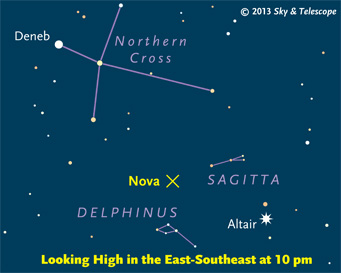

This star map shows the New Jersey sky around 11:00 pm on May 1 and 9:00 pm on May 31. So a map that reflects the stars’ position at 11:00 pm on the first day of the month will reflect their position at 9:00 pm at the end of that month. Thanks to the time zones, anyone at 40 degrees north-from Columbus, Ohio to Beijing, China-would see the same stars that we do in Jersey City, at the same time of night.Īs Earth orbits the sun, the stars rise and set four minutes earlier each night. Northern New Jersey, where Liberty Science Center is located, is 40 degrees north of the equator. Latitude is how far we are north or south of the equator.

The key factor determining which stars we can see on a certain night is our latitude.
Skyand telescope.com skychart how to#
Repeat the sequence facing SOUTH, WEST, and EAST. They help you to learn how to find constellations, bright stars, planets, and interesting binocular and telescope.How many can you spot? Do they match the map? Using Polaris on your map as a reference point, scan to the other stars, planets, and constellations depicted on the chart.From where you stand, find bright Polaris, also known as the North Star.Hold the sky map with NORTH at the bottom.

Using your compass to get your bearings, face north.Find a spot outdoors with as little artificial light as possible.Sky map ( click here to view and print out the sky map for May 2022).Please note that we do not offer subscriptions for more than one year at a time.Objective: In this activity, you'll step outside and find constellations and planets in the night sky. Telescope users will find that The Night Sky is a fantastic overview map to use as the perfect complement to our Sky Atlas for Small Telescopes and Binoculars. Gift subscriptions are welcome and recipients are sent a notification card.Ī Sky Calendar subscription is $12.00 for a year. A subscription may start anytime and consists of twelve issues. The Sky Calendar is published in loose-leaf form and mailed quarterly (Feb-Mar-Apr May-Jun-Jul Aug-Sep-Oct Nov-Dec-Jan). Astronomer George Lovi, in his Ramblings column for Sky & Telescope, called it "one of the most approachable, understandable, and friendly observing guides ever offered." In his review column in the latter, Phillip Morrison determined it to be "a bargain entry into direct observation of the the changing order visible in the heavens." In an annual summary of astronomy publishing (in Mercury magazine), the Astronomical Society of the Pacific gave its Special Commendation to the Sky Calendar. It has since had favorable reviews not only from astronomical publications, such as Sky & Telescope and Mercury, but also from School Library Journal and Scientific American.

The Sky Calendar has received awards for excellence in educational journalism from the Educational Press Association of America. Both the sky map (on the reverse side) and the calendar have appeared in issues of Science and Children, a journal of the National Science Teachers Association. Not only is it enjoyed by thousands of paid subscribers, but it is used (with permission) by classroom teachers with their students, by planetariums and astronomy clubs, and by park interpreters for audiences at sky talks. The Sky Calendar has evolved into one of the nation's most highly illustrated, easy-to-follow guide to sky events. The sky maps are designed for use at a convenient time in mid-evening, for a latitude useful for the entire continental U.S. The reverse side consists of a simplified star map of the month's evening sky. Diagrams in the boxes invite the reader to track the moon's rapid motion past the planets and bright stars of the zodiac, as well as to follow the more leisurely pace of the planets in their gatherings with bright stars and other planets. As its name implies, the sheet for each month takes the form of a calendar. The Abrams Planetarium Sky Calendar promotes skywatching for people of all ages.


 0 kommentar(er)
0 kommentar(er)
